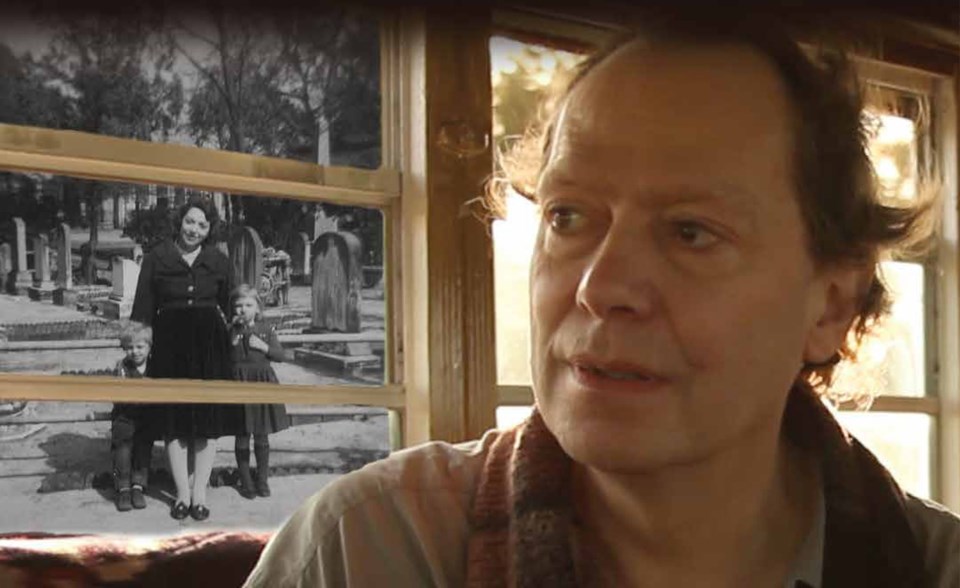The miracle of Helen & Edgar is that novelist, poet and playwright Edgar Oliver not only survived his very peculiar childhood but went on to turn life with his mad mother Louise Gibson Oliver and his one-and-a-half-year older sister Helen into theatre.
“Beware of Savannah” and “Beware of other people,” his mother — referred to throughout as “Mother” — warned her two children growing up in their old Savannah, Georgia house. The house was full of “crates and boxes and armoires” and was surrounded by a sea of ivy in which green lizards lurked. The kitchen was unused because Helen, Edgar and Mother always ate in restaurants.
“Father” had, Edgar and Helen were told, died of a heart attack a year after Edgar was born. Deeply suspicious of everyone, especially of relatives who spread, Mother said, “vicious gossip” about her, the three of them remained more or less cloistered in that old house. Edgar and Helen did go to school but had few friends because their schoolmates were convinced their house was haunted and that their mother was a witch. And they did take a yearly trip to Baltimore to visit Edna, his maternal grandmother, although sometimes Mother would lose her nerve and turn around and drive home or stay in Washington, DC in a rooming house instead.
It’s a very strange and true story, but it’s the performance that’s absolutely mesmerizing. Oliver seems physically small and very vulnerable on stage, almost moth-like. He walks with his head slightly forward, a little gnome-like figure dressed in black. His voice is captivating: apologetic, soft, rising and falling, slightly southern-accented and musical. His hands are like two pale birds slowly flying or clasped together as if in prayer. Alone on the York Theatre stage, he periodically moves aside and quietly takes a seat while images of his mother’s paintings are projected on a large screen: charming images of Helen and Edgar, of children in a park, children at the seaside, their Savannah house.
Mother, however, wasn’t just strange — she was certifiably mad. Regularly she performed what Edgar and Helen called “her foolishness.” On the floor in front of a locked yellow suitcase, she performed a ritual: “1-2-3, 1-2-3, my little yellow suitcase is now all locked.” This was repeated for over an hour and was a regular occurrence. Sometimes she performed this ritual in public to the great embarrassment of the children. She made Helen and Edgar repeat together, “You are the best, funnest [sic], most beautiful mother in the whole world and you cook the best food” — although she never cooked. She implored them to reassure her that she wasn’t “a grownup.” Helen and Edgar complied with all her wishes.
Strangely, in spite of his mother’s bizarre behaviour and his peculiar childhood, Helen & Edgar is a love story. There isn’t the slightest hint of complaint against Mother and, in an interview with the Straight, Oliver says his childhood wasn’t unhappy. In fact, it was — in its way — rich. The three of them read and sketched and led hugely imaginative lives where the ivy lizards were imagined to be scorpions and where the Ouija board revealed secrets. Today, Family Services would move in on such a family; the children would be removed, would eat Froot Loops for breakfast and watch cartoons on Saturday mornings.
But Oliver makes strange and beautiful theatre of his childhood. Long-form scripted storytelling is not for everyone. It takes patience to let the story unfold and a willingness to let go, to follow Edgar, Helen and Mother down the rabbit hole to wherever they’re going. Lovingly told, Helen & Edgar celebrates Louise Gibson Oliver, who seems to emerge from the pages of a Tennessee Williams play. Edgar Oliver counts on us — the audience — to treat Mother with the kindness of strangers. And we do.
For more reviews, go to .
Helen & Edgar is at the York Theatre until Oct. 8. For tickets, call 604-251-1363 or go to.
     Â



